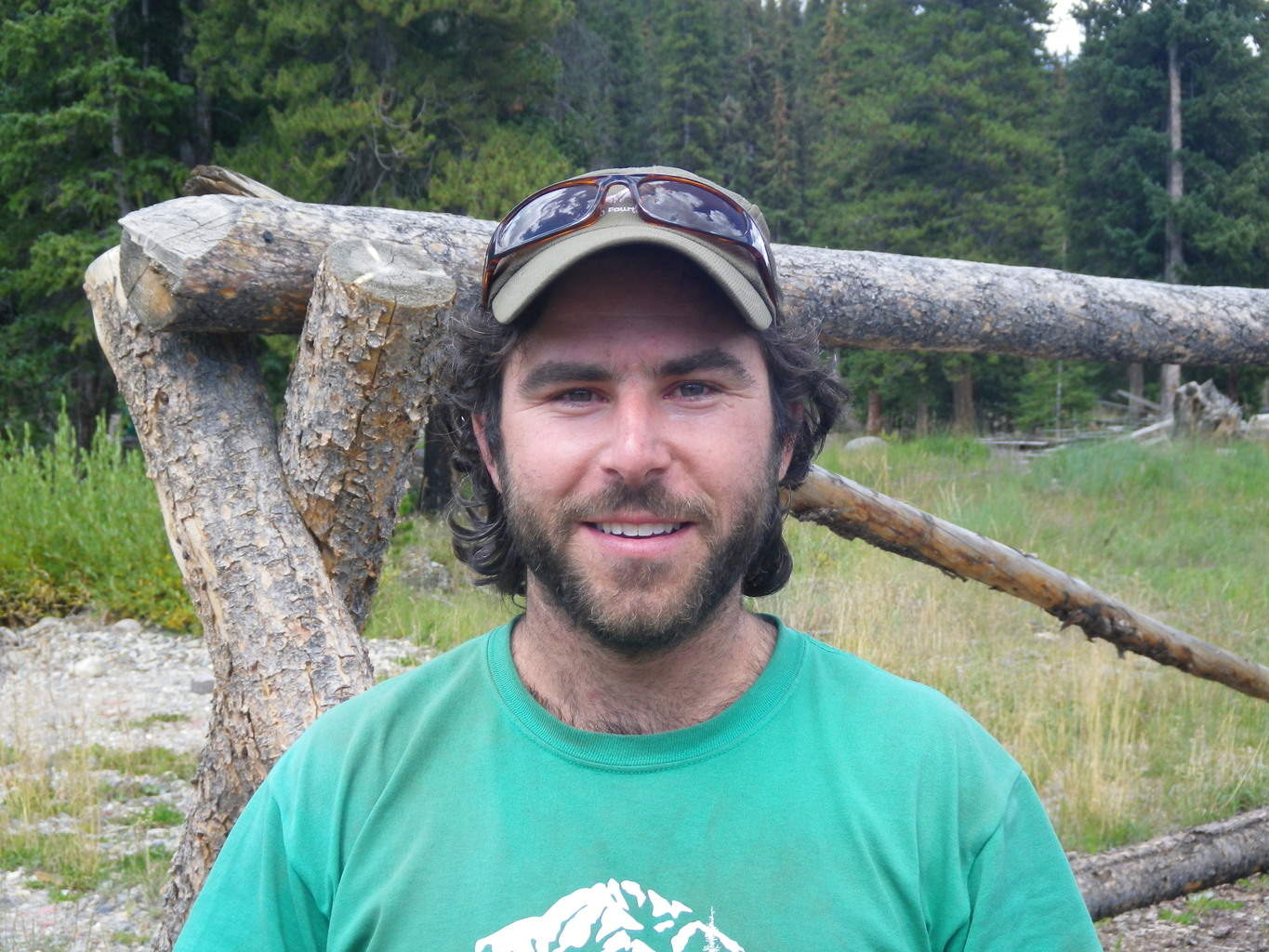On Thursday, Jason and I took a break from our four-day hitch on Mount Bierdstadt to scout this summer’s Adopt-a-Peak projects on Grays and Torreys. Driving early in the morning up the long and steep gravel road that leads to the Gray and Torreys trailhead, we encountered a 200-foot long, 8-foot high snowbank covering the entire width of the road about a mile short of the trailhead. Many vehicles were parked here as the two-wheel-drive hikers chose (wisely) to hike the remainder of the road.
But Jason and I drive a nearly brand new, V-8, 4×4 2011 Toyota Tundra that CFI won through a Facebook contest two years ago. So we got out, examined the firmness of the snow, and deemed it safe for our truck to follow the existing set of tracks and across. We were right—and made it across without any problems. Upon arrival at the trailhead, we discovered about 10 other 4×4 vehicles that had also decided they’d rather bust through the snow than hike some “bonus miles.”
After six productive hours of hiking and scouting, we were back at the trailhead. Sitting in the truck at 3 p.m., about to head out of the upper parking lot (with only two of the 10 vehicles left), I said to Jason, “Hmmm, I bet the snow is a lot softer now than it was this morning.” I followed up with, “Well, we can see most everyone made it down at least.” Jason quickly corrected me: “No. We can only see they made it out of here…” And in that moment we both realized our day was about to get a little more interesting.
Sure enough, as we pulled close to the snow bank, we saw a small SUV stuck in the middle and two women frantically waving us down for help. Of course, we would have helped no matter what, but in reality we had no choice–there was only one track through the snow, and they were blocking it.
One other vehicle with three hikers had also stopped to help. When the seven of us pushing on the vehicle proved fruitless, we decided to turn the CFI truck around, back it onto the snow bank, and, using a tow rope from the other party, pull the stuck SUV back to the trailhead side of the snow bank. This worked great.
However, the now-free SUV still had to get across. Jason and I drove through first to test it out. Though the snow had significantly softened, it was no match for our Toyota Tundra. We easily crossed to the other side. We pulled over, and waited to make sure the ladies made it across this time.
They got stuck again, and now we were on the wrong side of the bank to help them. The other guys started getting frantic as they were late for work, and still on the uphill side. We pulled them off before they remorsefully sped through the snow bank. They even left us their tow rope, just in case.
This was the penultimate moment: The ladies needed to get across, and we could not easily tow them if they got stuck again. Jason and I hiked back across the snow bank, and after a short discussion, it was decided that I would drive their car across. (The driver, after getting stuck twice, was a bit timid about giving it a third try.)
With her friend in the passenger seat urging me on–“Go, go, go!”–I floored this stranger’s car and accelerated onto the bank. No problems on the way up. Cruising through the flat. A little swerving on the soft snow as we approached the down. Then over the last lip and gravity carried us the rest of the way!
Jason and the driver met us at the good side of the bank, ecstatic. After some hugs, high-fives, and thank-yous–the only payment I requested was that they volunteer with us sometime–we continued back to our camp on Bierstadt.
At training, we learned that the CFI work day starts the minute you leave base camp and ends when you arrive back in the evening. On Thursday, Jason and I learned first-hand why this is. Though we are mostly here to work on the trails, sometimes our job doesn’t end at the trailhead.
Also, if you’re planning on hiking Grays and Torreys in the next couple of weeks, I recommend just hiking the extra mile. We won’t be there every day!



